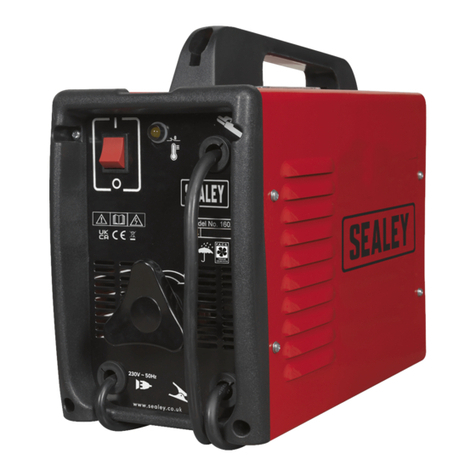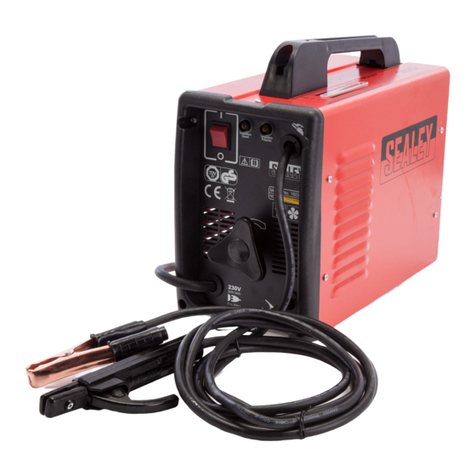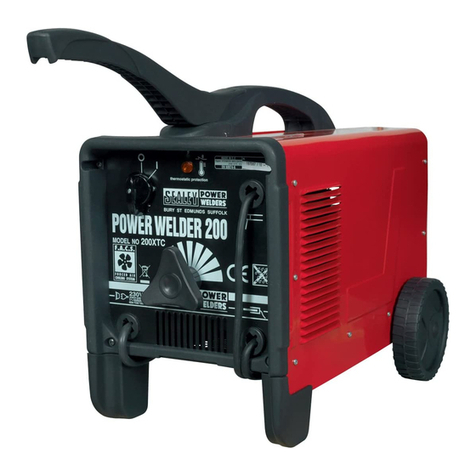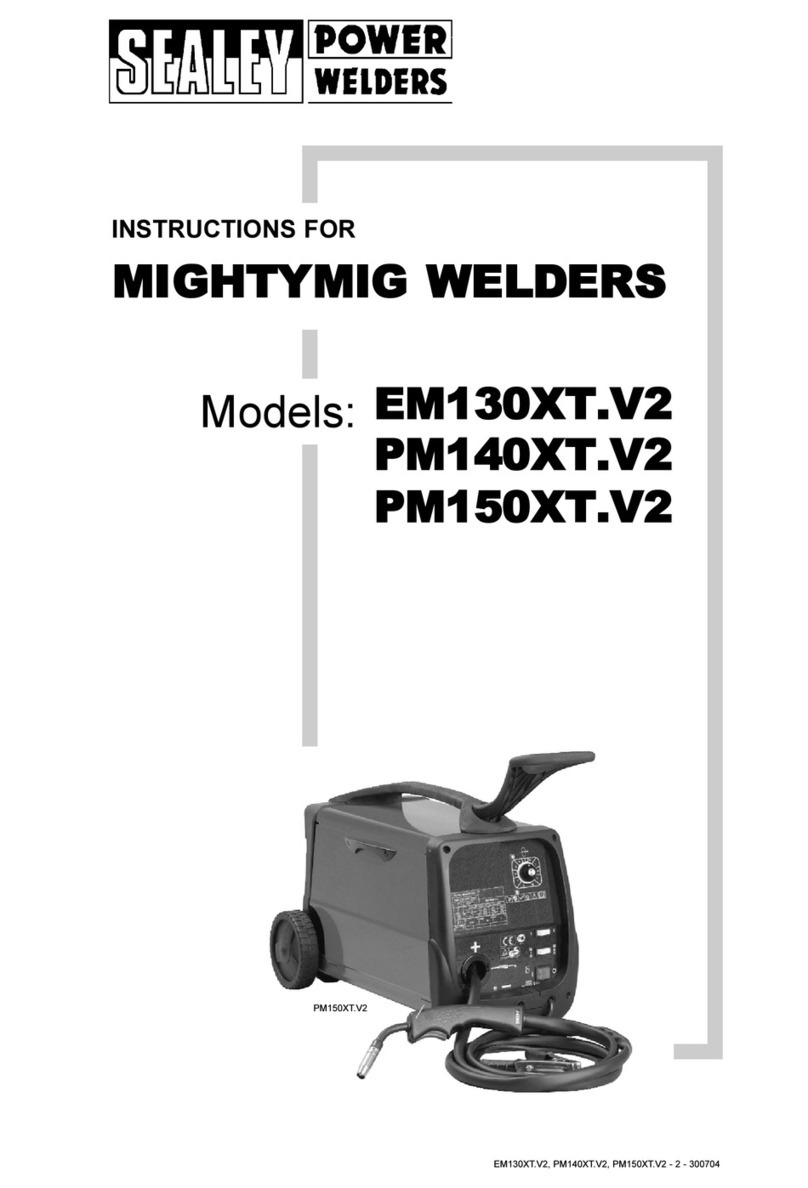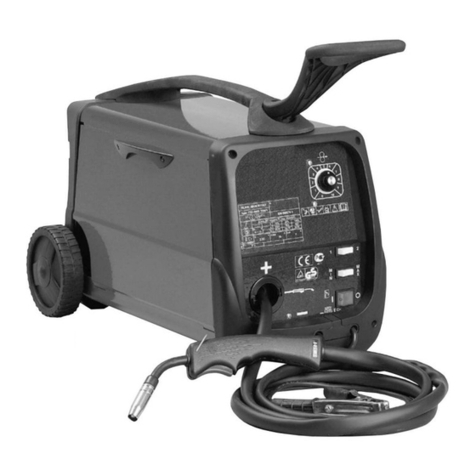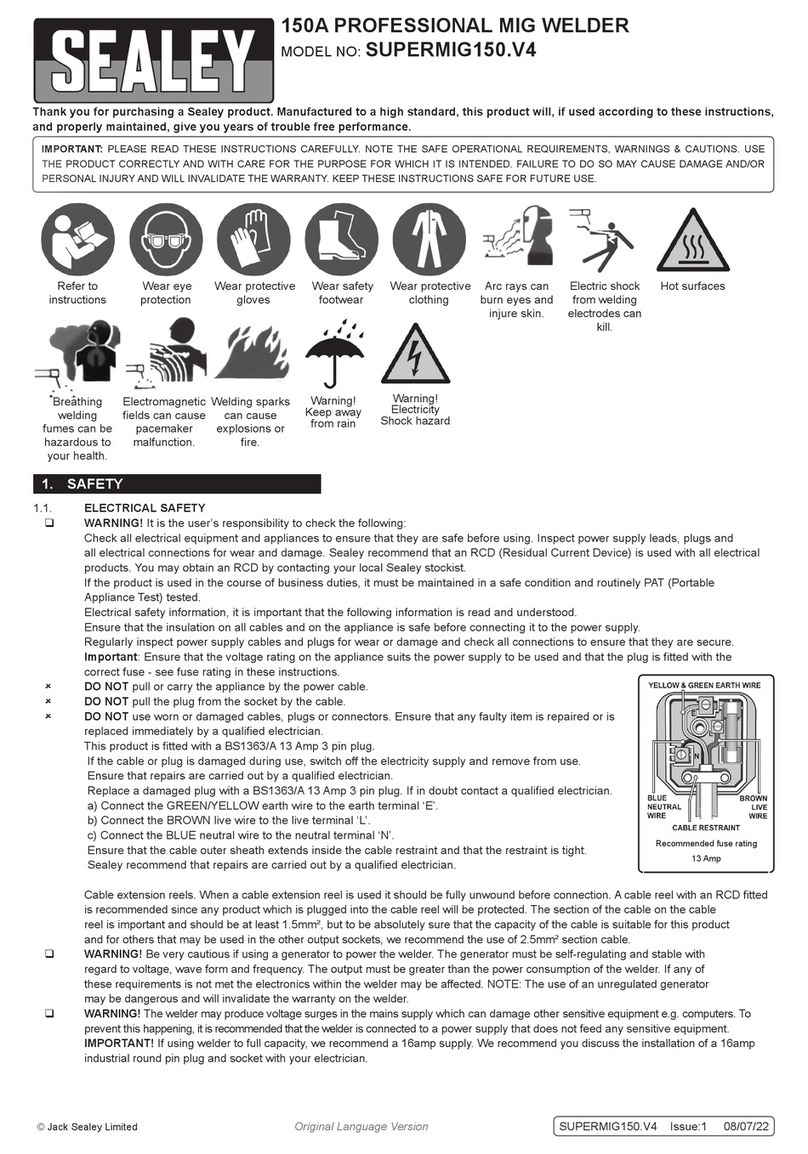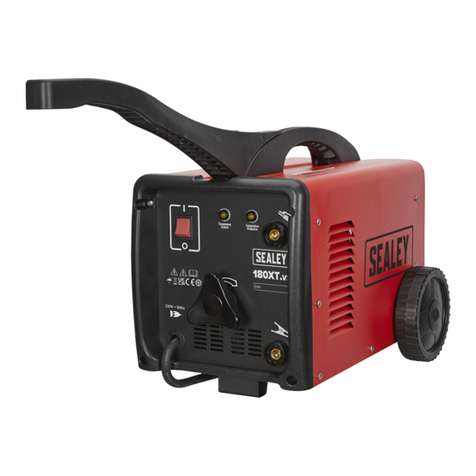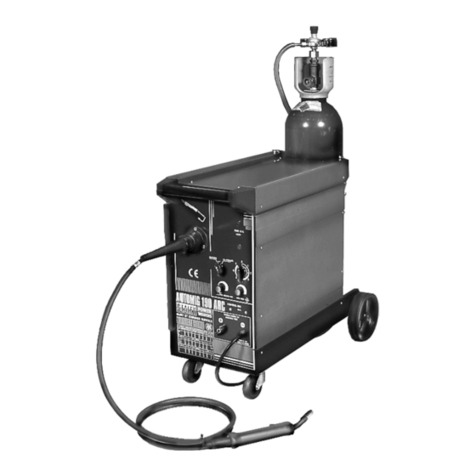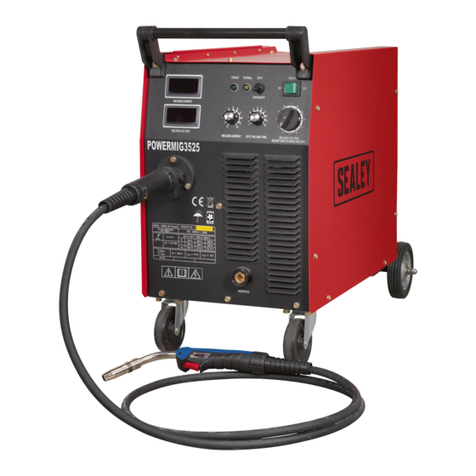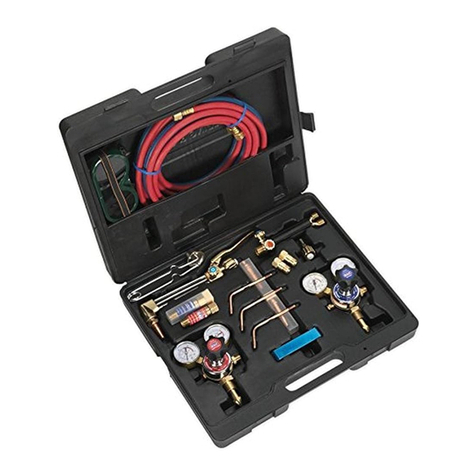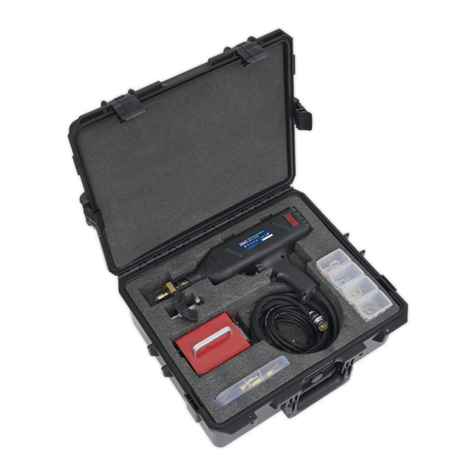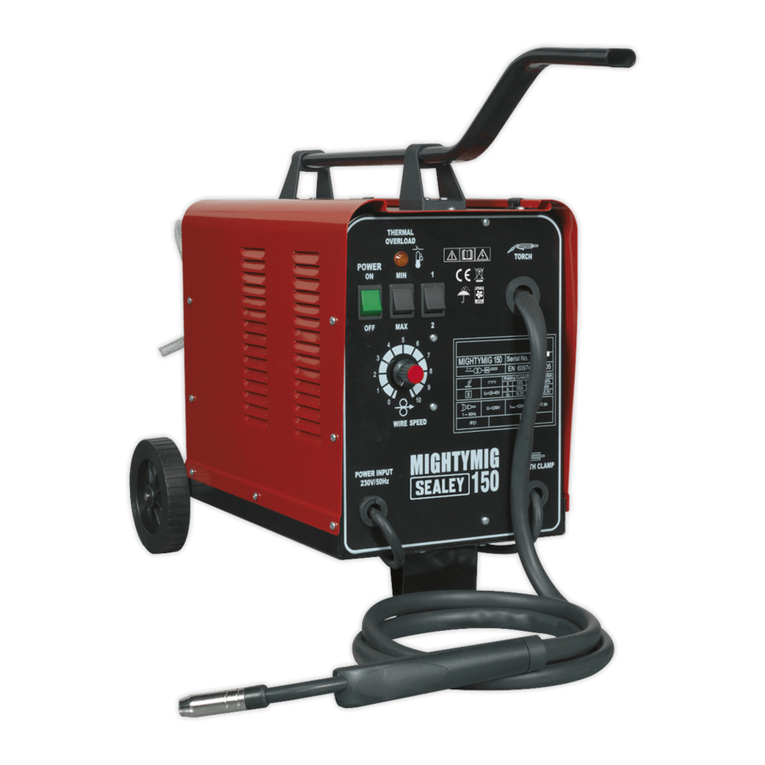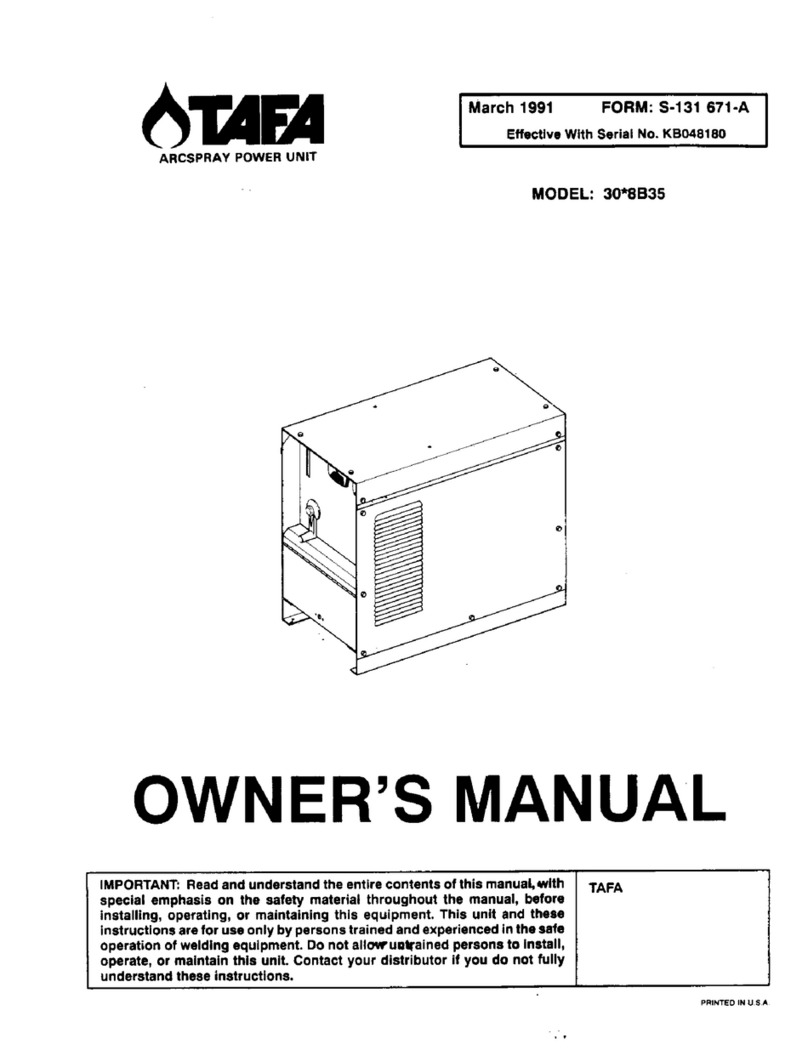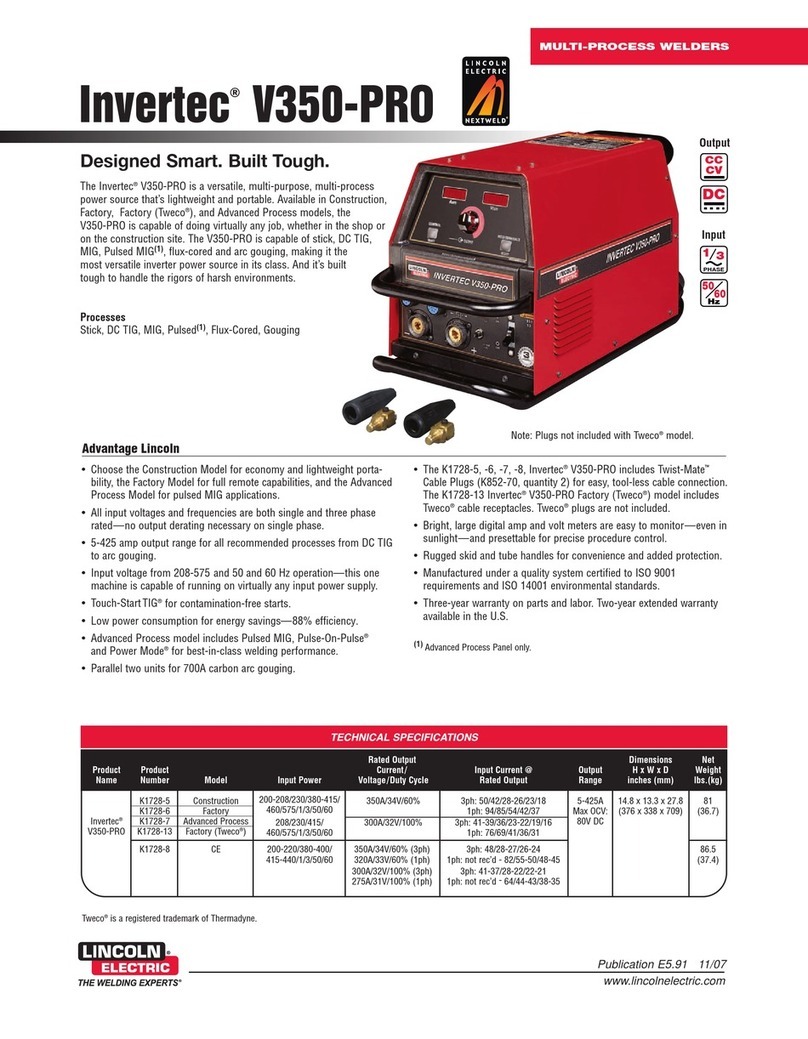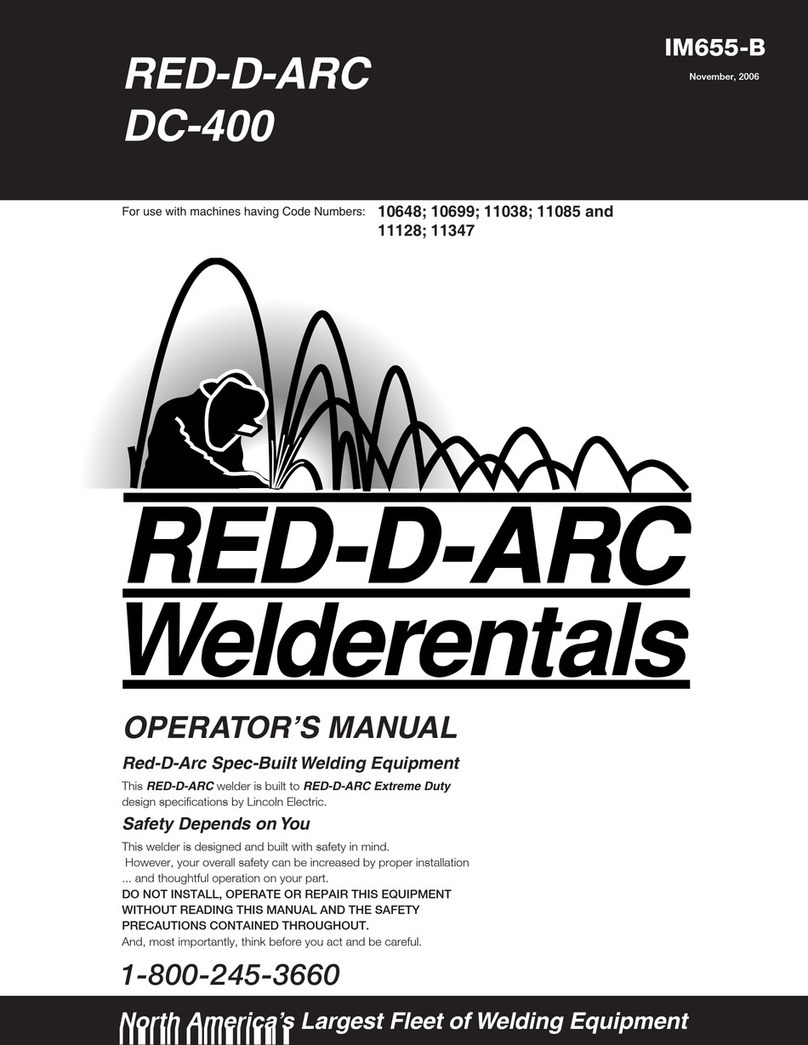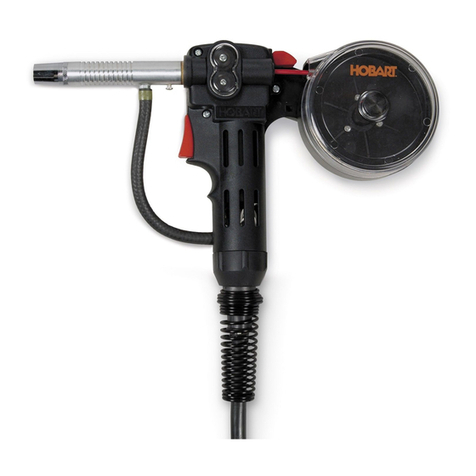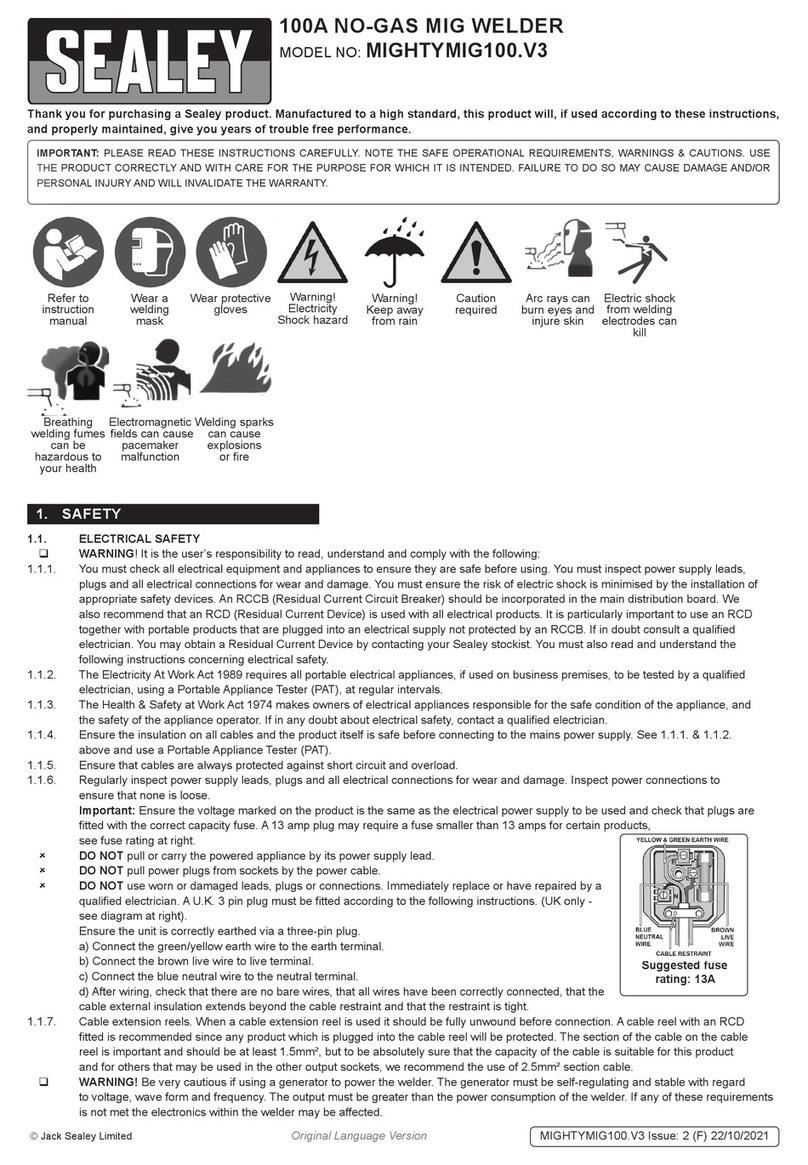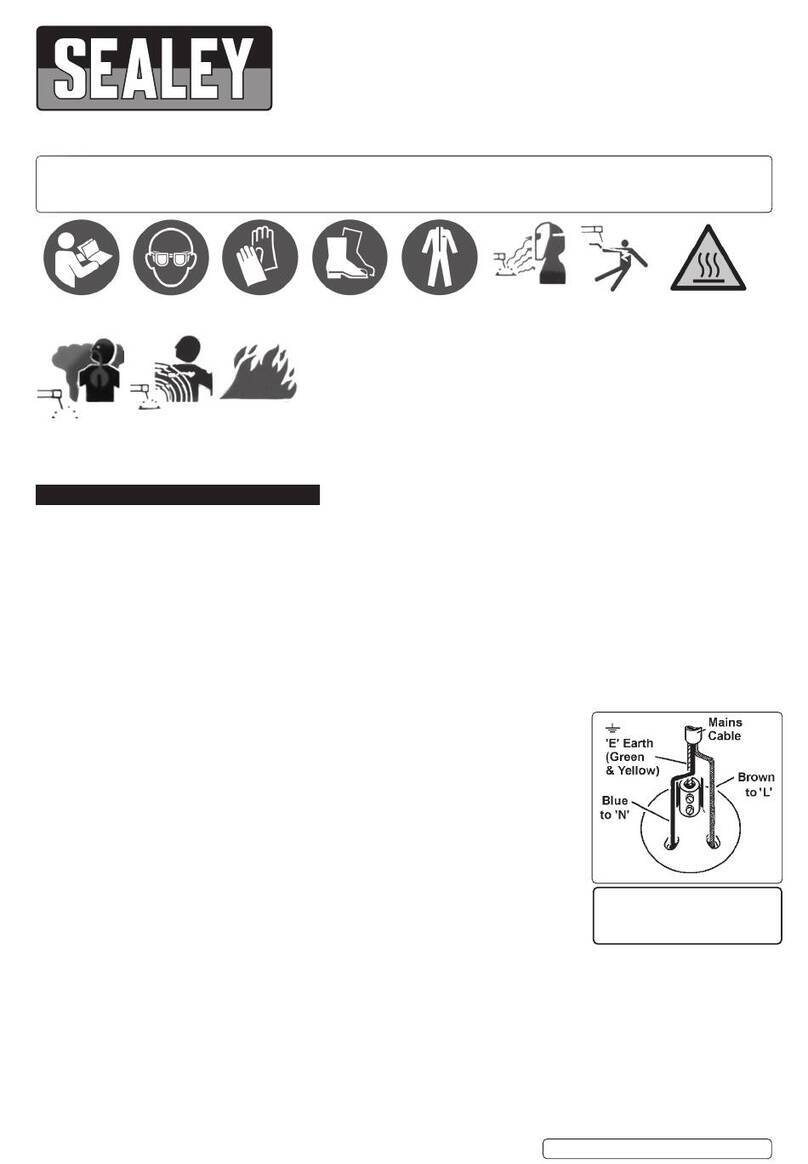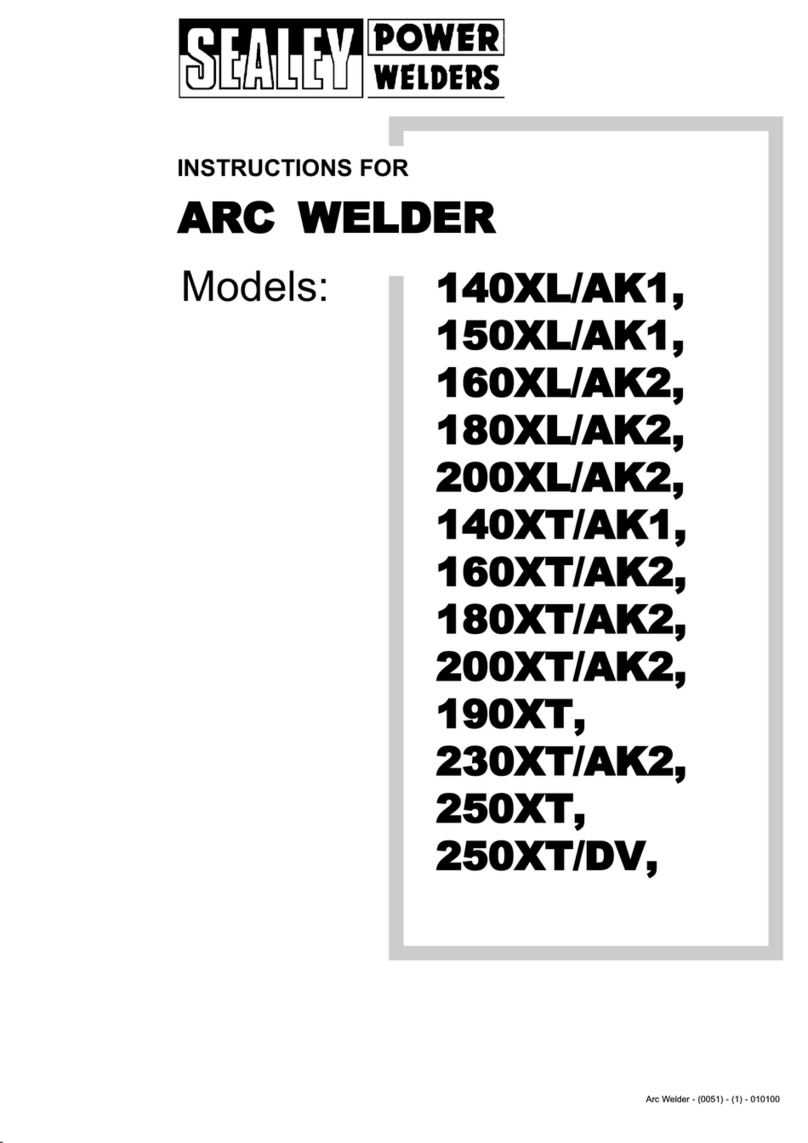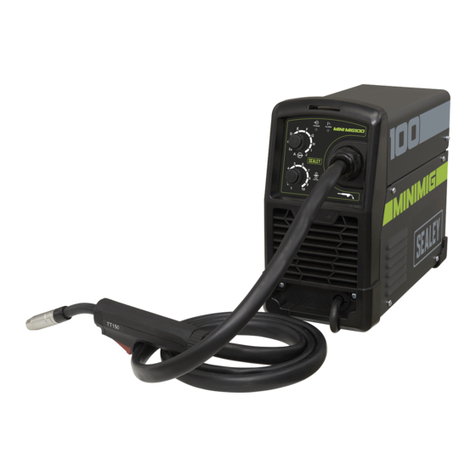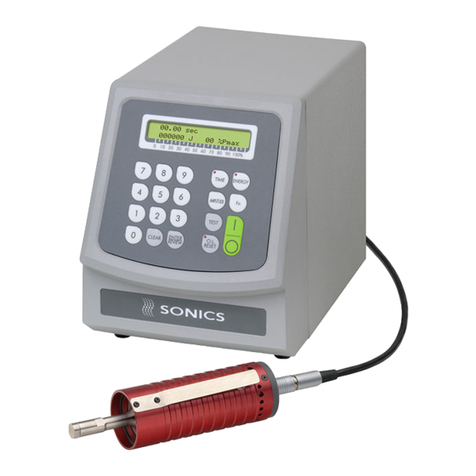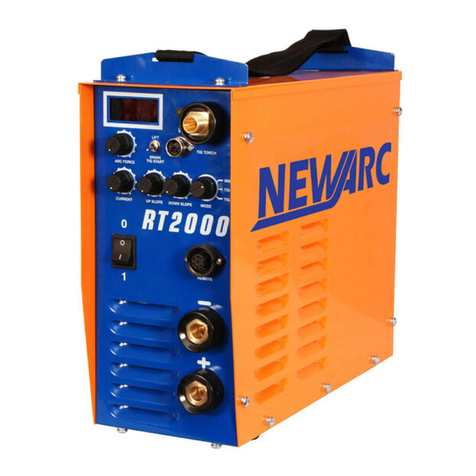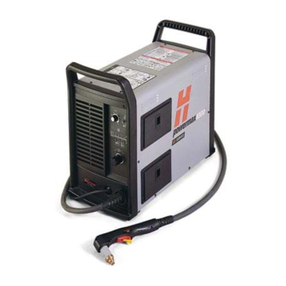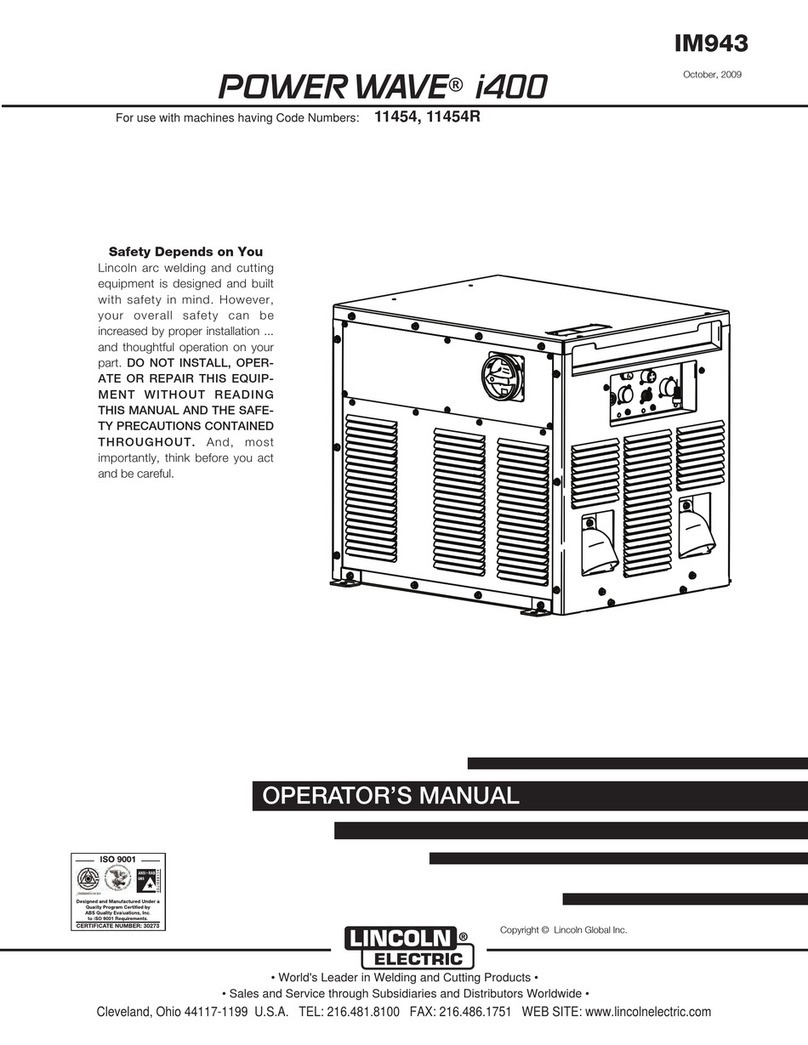
5. MAINTENANCE
▲DANGER: Risk of injury due to unexpected start-up.
Switchothepowersupplyandcloseothegassupply,whenconnectingordisconnectingtorch
Switchothepowersupplywhenchangingconsumableparts
5.1. GENERAL MAINTENANCE
5.1.1. CLEANING
5.1.1.1. Remove the nozzle from the front of the neck.
5.1.1.2. Removeallspatterfromthehead,gasdiuserandthenozzle.Thesecomponentsmustbecleanandfreeofalldebristoensure
ecientgasowandtopreventshortcircuit.
5.1.1.3. Check all front end consumables for damage and wear. Replace with new genuine parts if necessary.
5.1.1.4. To maintain the best performance repeatedly check and clean the front end tip and shield periodically. Also use an anti-spatter
spray on the tip and shield to reduce the build up of debris.
5.1.2. LINER REPLACEMENT (STEEL LINER)
WARNING: Risk of injury such as piercing or puncture caused by electrode tip, wear protective gloves and glasses
5.1.2.1. Switchothepowersourceanddisconnectthetorchfromthepowersource(removethewirefrominsidethetorchbuywinding
back inside the machine.)
5.1.2.2. Lay down the hose assembly straight and remove gas nozzle, contact tip and tip adaptor from torch neck.
5.1.2.3. Unscrew liner retention nut from central plug and pull the liner out of the torch.
5.1.2.4. Fitthenewlinerusingapushandtwistactionuntilthelinerisfullyinserted.Retthelinerretentionnut.
5.1.2.5. Cutotheexcesslengthofthespiralwirelinerushwiththetorchneckorthetipadaptor.
5.1.2.6. Retthetorchtothemachine
NOTE: Ensure the cut end of the liner does not protrude into the hole where the wire passes. it is recommended to grind the front
of the liner to 40 Deg and deburr.
5.1.2.7. Screwdownlinerretentionnutbyhandandcutotheexcesslengthofthespiralwirelinerushwithtorchneckortipadaptor.
5.1.2.8. Unscrew liner retention nut and pull out spiral wire liner.
5.1.2.9. Sharpen the spiral wire liner at the front to an angle of approx. 40° and deburr.
6. TROUBLESHOOTING
1. Wire feed unit operates but no gas
flow:
Gas cylinder empty
Gas regulator closed
Faulty solenoid
Restriction in torch cables
3. Burnback
Improper voltage setting
Contact tip overheating
Incorrect or blocked liner
Excessive cable kinking
Erratic wire feed
Improper stick out
2. Bird nesting
Contact tip overheating/Burnback
Incorrect contact tip size
Incorrect or blocked liner
Restriction in torch cable
Excessive cable kinkage
Excessive feed roll pressure
Misaligned drive rolls or wire guides
4 Erratic Wire Feeding or Arc
Adjust welding voltage
Improper drive roll tension
Improper drive roll size
Worn drive rolls
Incorrect or blocked liner
Incorrect wire guide size
Misaligned drive rolls or wire guide
Gaps at liner or wire guide junctions
Incorrect contact tip size
Contact Tip overheating
Spatter adhesion on exit geometry of
tip bore
Excessive cable kinkage
Poor earth or cable connections
Weld joint area dirty
MIG/T15.V2, MIG/T25.V2 Issue 1 31/10/22
Original Language Version
© Jack Sealey Limited
